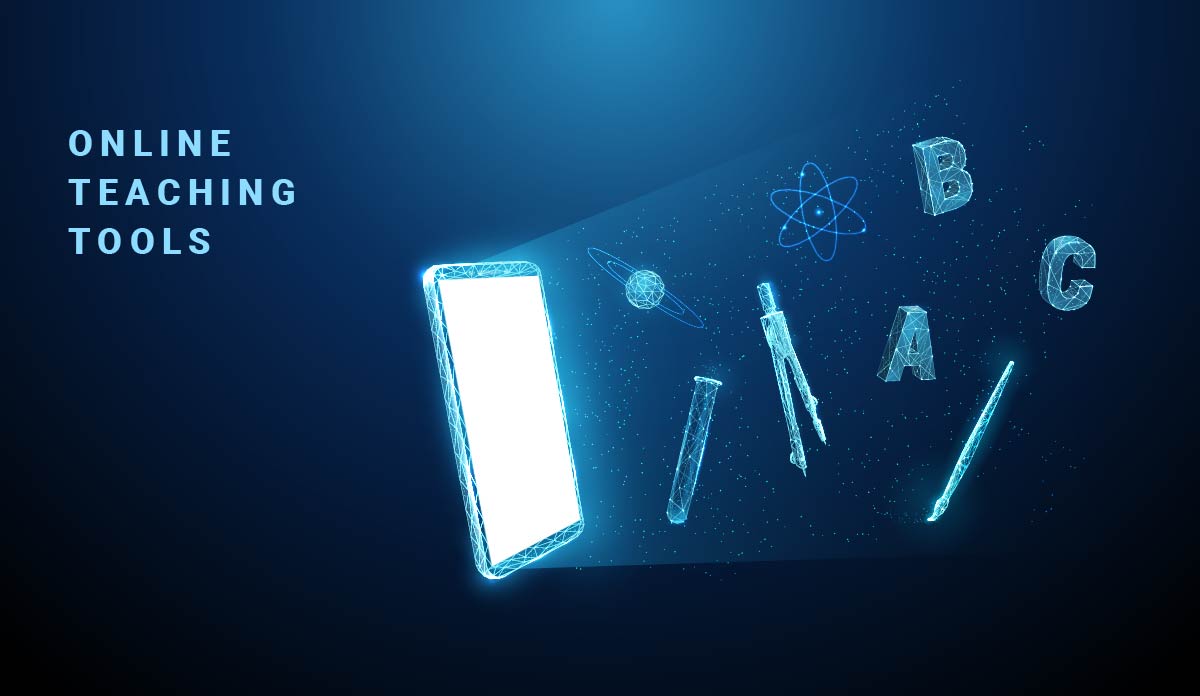With the increasing popularity of hybrid and online education, teachers are learning to get used to the online teaching environment. Online teaching has many advantages and challenges; however, we are here to help teachers turn those challenges into an interesting online classroom experience. Keep reading to explore what the 4 tips are!
1. Implement New Technology in Discussion and Lecturing
Before jumping into implementing new technology in discussions and lectures, teachers should understand the ins and outs of the current technology they are using.
There are several video conferencing tools for teachers to choose from including: Zoom, Webex, Skype, and Google Meet. Your school or organization may provide you with the premium version of such tools. Regardless of what tool you are planning to use, you should take the time and learn how to use it through reading written instructions and/or viewing tutorial videos. For example, Zoom technology allows you to mute everyone in the room except the host, or draw/make annotations on the shared screen directly. You can even integrate Zoom with Slack, as you can start a Zoom meeting right on Slack, a business communication platform similar to Monday and Google Classroom.
In an online class lecture, you can implement gamification tools in your lesson plans to help students understand and test their understanding of the subjects. Games aren’t used for the sole purpose of fun, but to encourage students to work together in solving problems. Kahoot is a game-based learning platform that is used as educational technology in schools. With the fun and simple interface, teachers can conduct class quiz games for students.
Another example of a great online instruction is Quizlet Live, where students have to match all terms and definitions together. Depending on the teacher’s wants and needs in improving classroom interaction, there are numerous tools online that will best suitable for the class. We’ve collected the Top 18 Favorite Online Teaching Tools here for reference.
2. Know your students
According to multiple pieces of research, the average attention spans vary by age. A 10-year-old child can focus for up to 30 minutes whereas a 16-year-old teenager can focus for up to 48 minutes. There are factors determining the ability to focus, from external distractions like noises or the phone, to internal distractions like hunger and tiredness. However, the data provides teachers an overall idea to formulate and structure their lectures, in order to help students absorb knowledge and understand the materials introduced in the lecture.
Knowing your audience is the most important first step in online courses besides getting to know the technology. With attention spans differing by age, teachers can create different breaks, fun games, or break down the lessons to bite-sized content. By doing this, students can have a mental break from focusing for an extended period of time. The better teachers know their audience, the better they can grab their attention and make learning a more enjoyable experience.
3. Take advantage of the space behind you
Unfortunately, in online classes, teachers do not have the ability to interact with students directly, since the only thing they are seeing is the student’s faces through the computer or tablet screen. However, being locked into a screen and glued to the chair doesn’t mean teachers and students can’t imitate the in-person learning environment. Don’t forget that there is a big space behind them teachers can take advantage of. Teachers can stand up from the chair and move further from the screen to explain terminologies or draw diagrams. For example, for literature class where students are learning to write descriptive essays, teachers can ask students to walk around and describe the rooms they are in. Online learning has many pros and cons and switching the cons to pros will make the online teaching and online learning experience more fulfilling and valuable for both students and teachers.
4. Check-in with students periodically
Having a lecture doesn’t have to be one-way where online instructors provide information and students receive information passively. In physical classrooms, teachers can see whether students have lost their attention or not; however, this is more challenging through online learning because teachers won’t know if students are paying attention to the lessons or are paying attention to other tabs on their screens.
A solution to make sure students are paying attention to the lessons is to ask them to turn their cameras on. Having a camera turned on doesn’t guarantee student’s attention, but it will stimulate a similar in-person classroom while they are attending distance learning class.
Also, check-in with students on a regular basis. Ask them an engaging question. Or ask them to share their thoughts with the whole class. By making this small gesture, you will make sure students are on the same page with the lessons and give a cue to other students that they may be called on the next time. An example of checking in with students is to conduct polling (can be anonymous). Polling is a great way to ensure students’ understanding of a particular topic before moving on to the next topic.
Taking advantage of those tips will not online help you teach successfully online, but to provide you strong guidance to consider full-time online teaching. In the United States, there are hundreds of classes online right now, from high school to college. The demand for highly-qualified teachers is up and rising, and this is your opportunity to grab it and turn it into a meaningful teaching experience.










